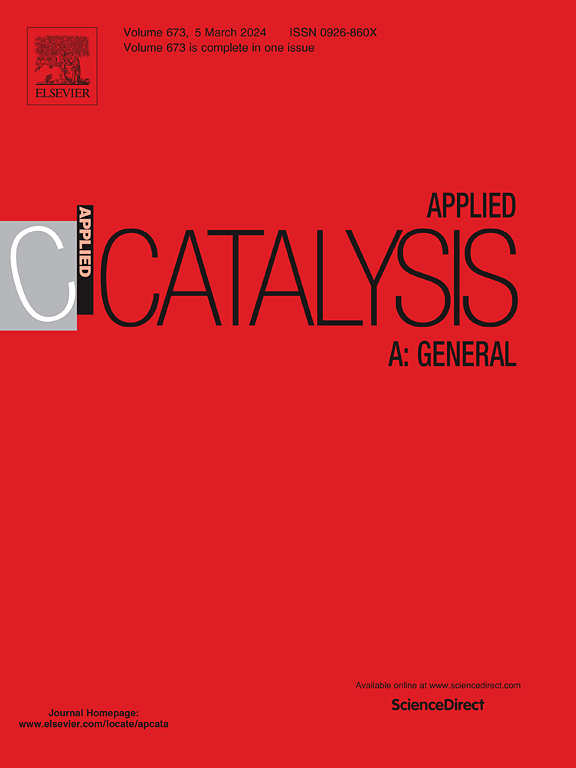Influence of Pd speciation and support interactions for Suzuki reactions
IF 4.8
2区 化学
Q2 CHEMISTRY, PHYSICAL
引用次数: 0
Abstract
The carbon-carbon bond-formation via the Suzuki reaction is widely used in the pharmaceutical and chemical industries, typically catalyzed by homogeneous palladium (Pd)-ligand complexes. Despite their effectiveness, these catalysts face challenges such as difficult Pd separation and limited reusability. This study targets heterogeneous single atom catalysts (SACs) on varied supports, where Pd-UiO-66-NH2 metal-organic framework (MOF), synthesized via a ball milling method, was evaluated against Pd/TiO2 and Pd/C in Suzuki coupling reactions. Characterization data (TEM, XRD, DRIFTS, EDX, chemisorption) revealed that Pd-UiO-66-NH2 predominantly features isolated Pd atoms, while Pd/TiO2 contains both single atoms and nanoparticles and Pd/C has predominately nanoparticles. Turnover frequencies for varied substrates trended as Pd-UiO-66-NH2>Pd/TiO2>Pd/C, consistent with fitted kinetic parameters. Hot filtration experiments indicated reactivity from each catalyst stemmed from leached Pd. These results highlight the potential of SACs and the importance of support choice for achieving high catalytic efficiency with minimal metal loading, aligning with green chemistry principles and demonstrating the promising role of MOFs as efficient platforms for SACs.

Pd形成和支持相互作用对Suzuki反应的影响
通过铃木反应形成碳-碳键广泛应用于制药和化学工业,通常由均相钯配体配合物催化。尽管它们很有效,但这些催化剂面临着困难的Pd分离和有限的可重用性等挑战。本研究以不同载体上的非均相单原子催化剂(SACs)为研究对象,采用球磨法合成Pd- uuo -66- nh2金属有机骨架(MOF),对Pd/TiO2和Pd/C在Suzuki偶联反应中的性能进行了评价。表征数据(TEM、XRD、DRIFTS、EDX、化学吸附)表明,Pd- uo -66- nh2以分离的Pd原子为主,Pd/TiO2以单原子和纳米粒子为主,Pd/C以纳米粒子为主。不同底物的周转频率趋势为Pd- uio -66- nh2 >;Pd/TiO2>Pd/C,与拟合的动力学参数一致。热过滤实验表明,各催化剂的反应性源于钯的浸出。这些结果突出了活性炭的潜力和支持选择的重要性,以最少的金属负载实现高催化效率,符合绿色化学原则,并展示了mof作为活性炭高效平台的前景。
本文章由计算机程序翻译,如有差异,请以英文原文为准。
求助全文
约1分钟内获得全文
求助全文
来源期刊

Applied Catalysis A: General
化学-环境科学
CiteScore
9.00
自引率
5.50%
发文量
415
审稿时长
24 days
期刊介绍:
Applied Catalysis A: General publishes original papers on all aspects of catalysis of basic and practical interest to chemical scientists in both industrial and academic fields, with an emphasis onnew understanding of catalysts and catalytic reactions, new catalytic materials, new techniques, and new processes, especially those that have potential practical implications.
Papers that report results of a thorough study or optimization of systems or processes that are well understood, widely studied, or minor variations of known ones are discouraged. Authors should include statements in a separate section "Justification for Publication" of how the manuscript fits the scope of the journal in the cover letter to the editors. Submissions without such justification will be rejected without review.
 求助内容:
求助内容: 应助结果提醒方式:
应助结果提醒方式:


